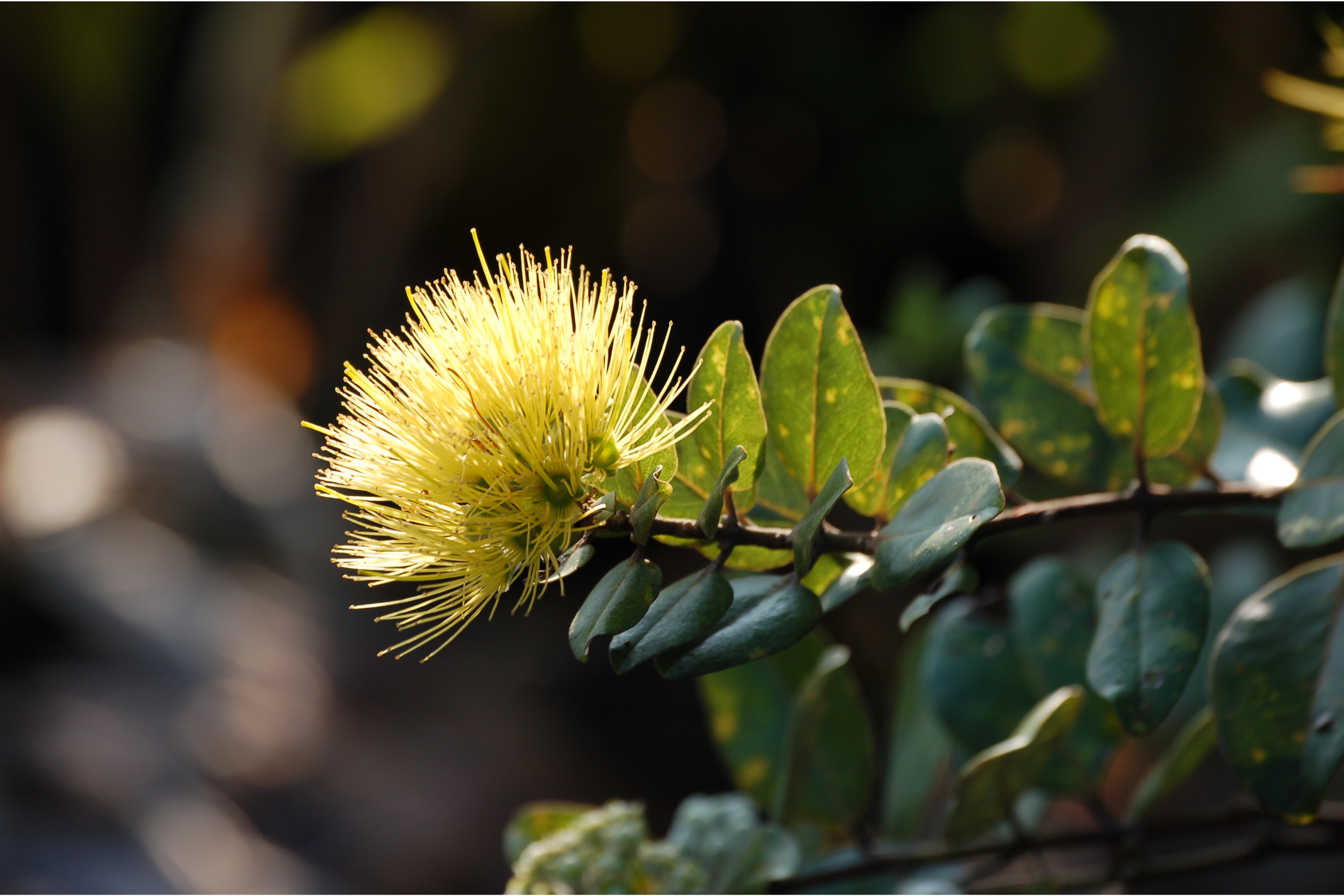'Ohi'A
(Metrosideros macropus)

Description
Metrosideros macropus, the lehua mamo or 'ohi'a, is a species of tree in the eucalyptus family, Myrtaceae. It is endemic to the island of Oʻahu in the Hawaiian Islands. It is closely related to the widespread and highly variable ʻōhiʻa lehua (M. polymorpha), found throughout the islands. Lehua mamo, however, is only found in the Koʻolau mountains. It is distinguished from M. polymorpha by the elongate leaf petioles (1/3-1/2 as long as the leaf blades, compared to less than 1/4 as long in M. polymorpha) and the flowers are usually yellow. The latter character is also found in some varieties of M. polymorpha, which normally has red flowers, but occasionally the flowers of M. macropus are red as well. Metrosideros is one of the most widely spread flowering plant genera in the Pacific. New Caledonia has 21 species of Metrosideros, New Zealand has 12, New Guinea has seven and Hawaii has 5. The genus is present on most other high Pacific Islands, including Solomon Islands, Vanuatu, Fiji, Samoa, Cook islands, French Polynesia, Bonin Islands and Lord Howe Island, but absent from Micronesia. The genus is also represented by one species in the Philippines, one in South America (Chile and Argentina), and one outlier in South Africa. Metrosideros seeds are very lightweight and easily dispersed by wind. The seeds can also survive freezing temperatures, and up to 30 days submerged in salt water and still germinate. which probably accounts for their wide distribution. They are often found as pioneer trees on lava flows and on mountain ridges. Despite the clear propensity towards long-distance dispersal, this genus does not occur in mainland Australia. For some time it had been hypothesised that Metrosideros evolved in New Zealand, and dispersed from there throughout the Pacific. This was due to the long fossil record of Metrosideros in New Zealand coupled with the absence of any Metrosideros fossils on other Gondwanan landmasses. The oldest conclusive fossil evidence of Metrosideros in New Zealand is fossil fruits from the Miocene aged Manuherikia sediments of Central Otago. There is a fossil pollen record going back much further, but it has been shown that Metrosideros pollen is very similar morphologically to many other genera within the family Myrtaceae and as such, fossil pollen cannot be reliably used as an oldest record of the genus.
Taxonomic tree:







